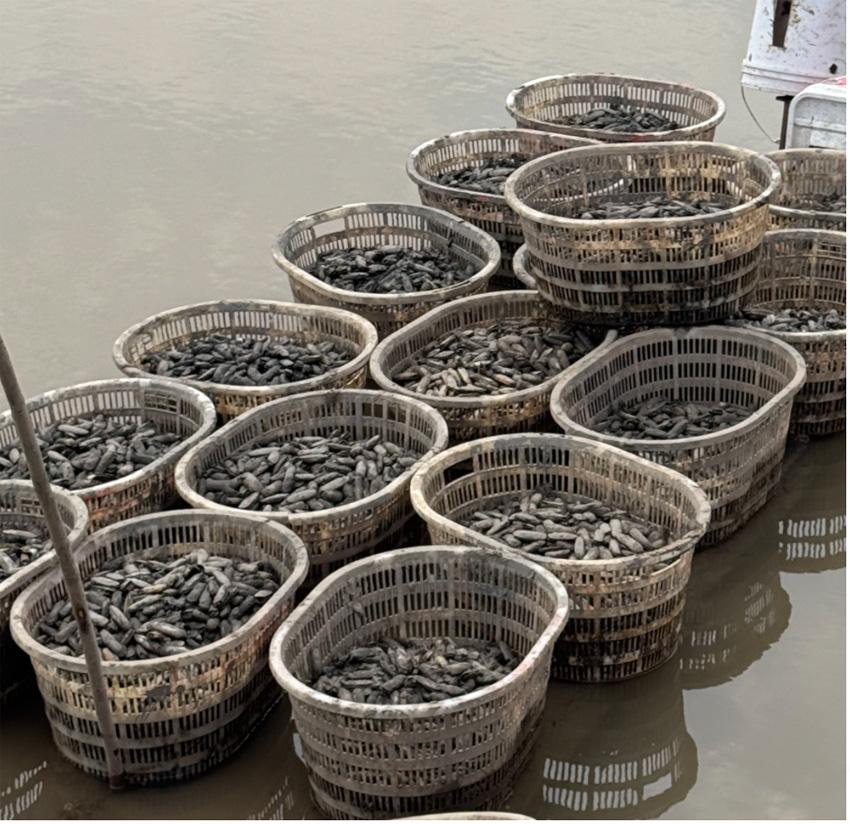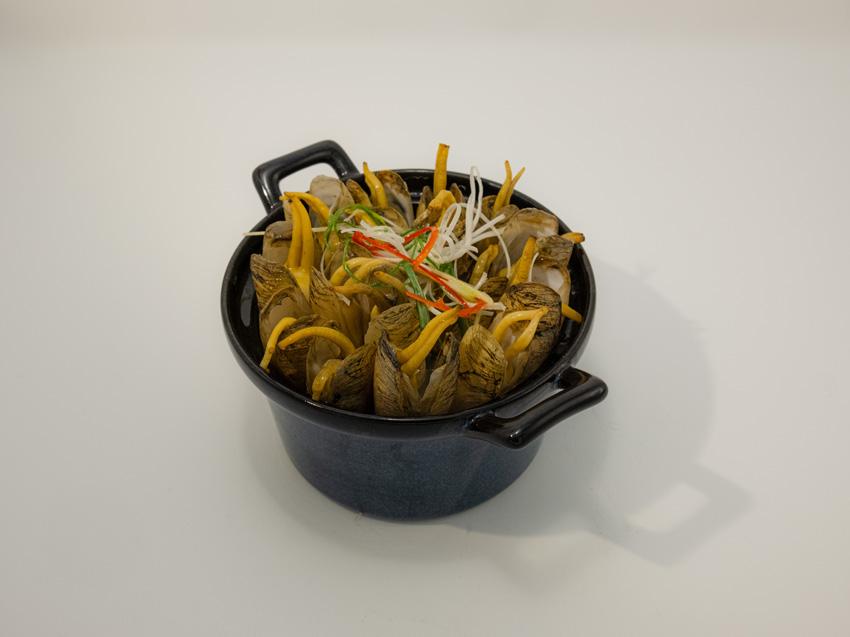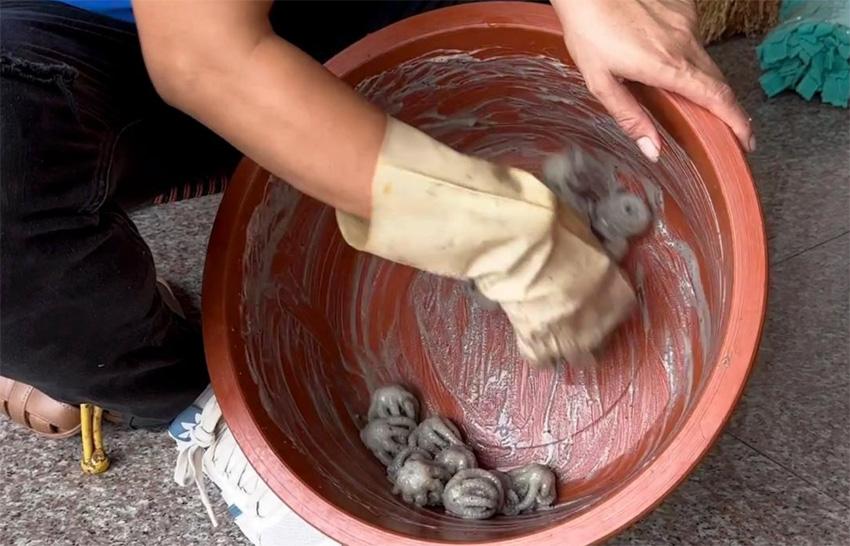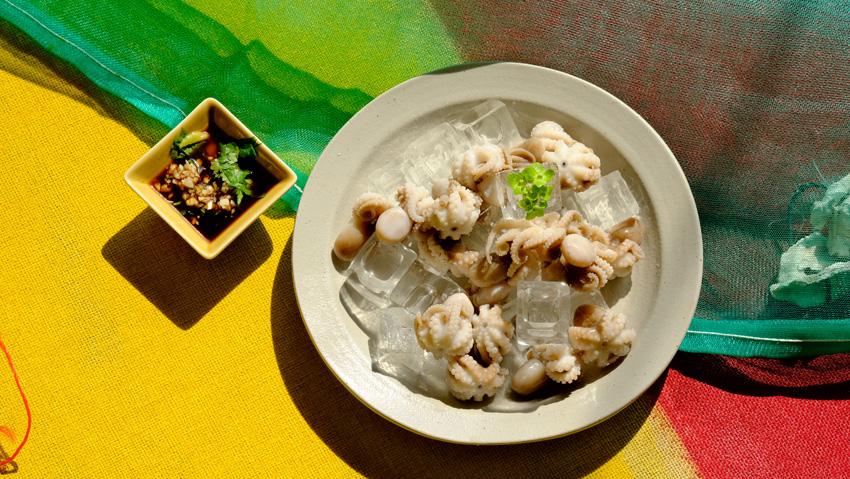- Guide
- Flavors
By Zhang Junlin | Photos by Fushi
On the southeastern coast of China, where the tides of the Taiwan Strait breathe life into a fertile marine world, lies the Quanzhou Taiwanese Investment Zone—a district famed for seafood farming and rich estuarine waters. Here, summer heralds the plumpest razor clams, while baby octopus—a regional specialty known for its tender bite—readies itself for the late-summer to winter harvest. Both are nature's treasures, transformed into unforgettable delicacies the moment they touch the tongue.
Ocean's Larder
The Investment Zone's coastline is a living pantry. In Baizhi Township, razor clams have been farmed for generations at the mouth of the Luoyang River, where fresh river water mingles with salty tidal currents. This rare blend creates clams of exceptional quality—sweet, firm, and crisp to the bite.
"Baizhi clams are at their best from May to August," says restaurant owner Guo Peiyan. "After that, they grow larger, but lose the perfect texture." All are first-year clams; locals know that keeping them beyond two years dulls their flavor. Harvesting follows the rhythm of the sea—only when the tide recedes can clams be dug from the flats.

Clam harvesting in southern Fujian (Minnan)
In the Minnan dialect, this is called gan ge—"clam hunting." On sandy or muddy tidal flats, razor clams burrow deep, leaving only pinhole-sized breathing marks. Skilled harvesters spot these signs, then dig by hand or with small spades. During the height of breeding season, a single day's work can yield over 20 kilograms of clams.
Baby octopus, meanwhile, prefers rocky or coral-rich seabeds, often hiding inside empty seashells. Fishermen catch them while trawling or during low tide by flipping over coastal rocks. The prime season runs from the sixth lunar month to Lunar New Year (roughly July to February), with the richest catches in autumn.
Legends in the Tide
Both creatures come wrapped in folklore.
Locals call the octopus shiju—"stone dweller"—for its habit of clinging to crevices. One enduring tale tells of "Old Stone Dweller vs. the Evil Sea Serpent," in which a wise, ancient octopus fought a deadly sea snake, wrapping its arms around the serpent until both were claimed by the tide. Ink stains and scales left on the rocks became symbols of bravery and cunning.
Razor clams carry a softer, bittersweet story. Long ago, a princess from the Dragon King's undersea palace fell in love with a human fisherman. Her father, furious, turned her into a clam, burying her in the tidal flats with only a slender siphon to reach the surface. Locals say that filament is her thread of longing, forever reaching for her lost love. To this day, some harvesters joke they are "visiting the Dragon Palace princess" when digging clams.
From Shore to Table
In local kitchens, the goal is to let the sea speak for itself.
Razor clams are often steamed or stir-fried to preserve their natural sweetness. A beloved classic, Old Tofu with Razor Clams, places cleaned clams head-down into tofu blocks with slices of ginger, steaming until the tofu absorbs their juices. Another variation—Orange Peel Tofu with Razor Clams—adds citrus zest for a bright, refreshing lift.

Orange Peel Tofu with Razor Clams
Baby octopus gets equally thoughtful treatment. The famed hand-polished octopus is tumbled with crushed peanut shells to firm its texture, then blanched for a tender yet springy bite. Served simply with soy-vinegar dip, it carries a subtle sweetness that speaks of the open sea. Stir-frying with soy sauce over high heat imparts a smoky-sweet depth loved by locals.

Preparing hand-polished octopus

Hand-polished octopus
From the tidal flats of Baizhi to the bustling fish markets, from ancient legends to steaming kitchen pots, razor clams and baby octopus embody more than just seasonal flavor. They are the taste of a coastline, the craft of its people, and the stories that have traveled with the tide for generations—reminding diners that every bite is both a feast and a legacy.
